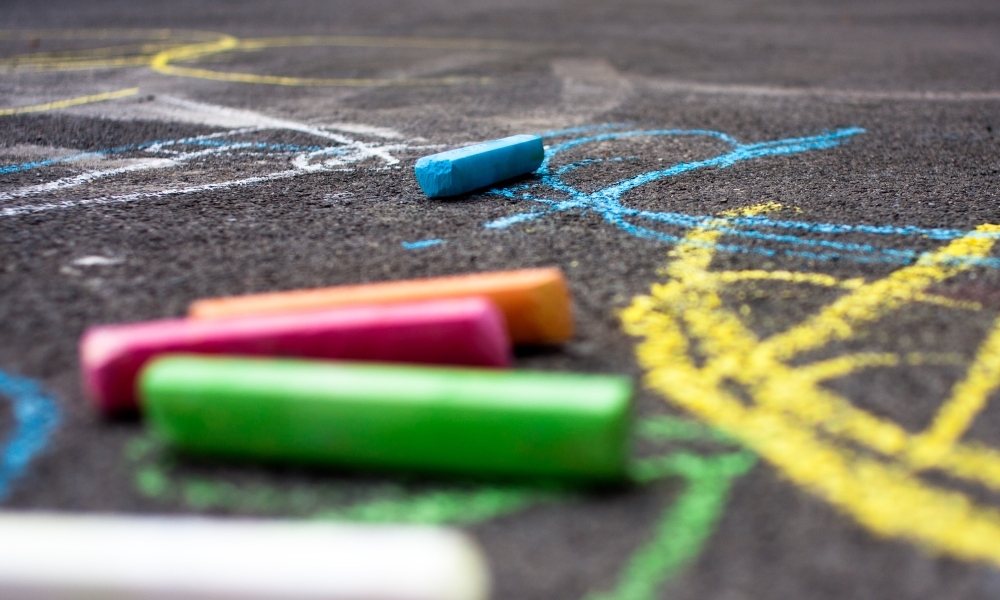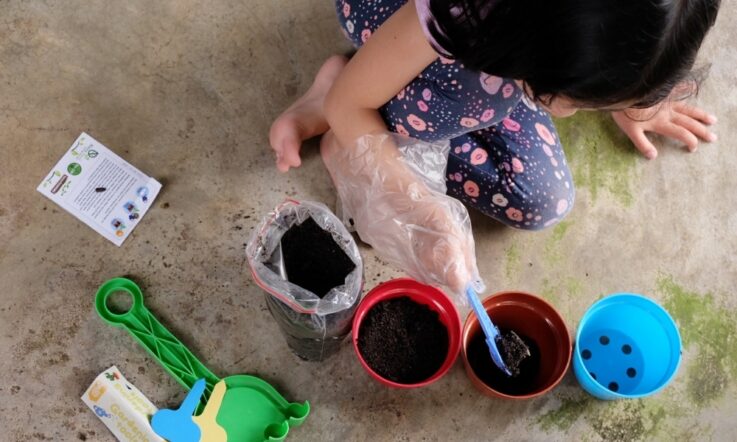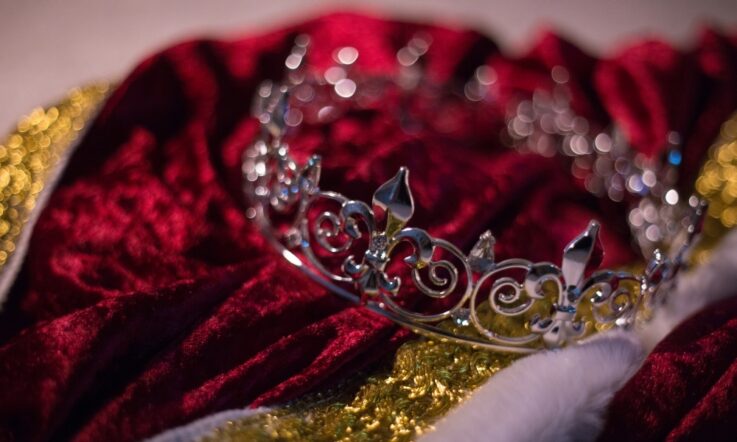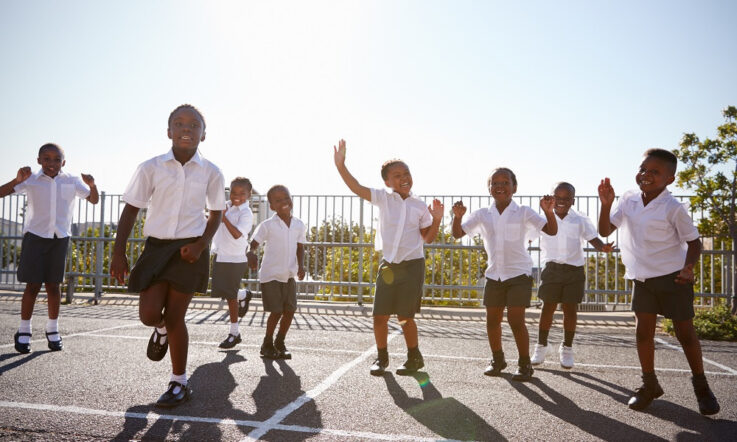When you think about student agency, do you picture classroom tasks and surroundings? What about areas such as the playground, or oval? Here, Rachael Jamieson-Newton and Benjamin Newton share details of a review into primary students’ play at St Paul's Grammar in Sydney, New South Wales.
The primary school at St Paul's Grammar has been exploring play-based learning strategies in classrooms and outside spaces. St Paul's is a private coeducational day school on the outskirts of Sydney, where students learn within an inquiry model based on the International Baccalaureate.
Four years ago the primary executive began a review, to look beyond the classroom at break times as part of an inquiry learning strategy. Having seen success for students in some of the play-based activities being used in classrooms – particularly with regards to confidence in learning and collaboration – the team decided to explore ways that learning could be extended and enhanced in the playground.
Extending learning and inquiry to the playground, the goal was for students to see themselves as active learners wherever they go. The team began by looking at the spaces used by students, both indoors and outdoors. They considered where arguments over games were occurring during breaks and reviewed the activities being undertaken.
The review found opportunities for staff to support and extend students’ natural inclination to learn through play. There are many kinds of play that children can be involved in. Researchers define an important difference between ‘free play’ that is child-directed, and ‘guided play’, set up by teachers to promote specific learning outcomes. (Paye & Danniels, 2017).
Our classrooms usually include opportunities for guided play and we assume that playground time is free play. However, we are learning to question this:
- Who makes the decisions on what is played and where?
- How many options are there?
- What are the rules?
- Do the tools and toys of play have one purpose?
- How free are the children to engage in play that they choose?
- In other words, how much agency do children have for their own play?
Open-ended play spaces
The review noted that some students would only play soccer and were highly competitive. These students used much of the available space, with multiple soccer games played within individual year groups rather than across years. Some students gravitated to the natural areas of the playground.
The earliest intervention was to remove the soccer goals and have the children think about the playground spaces in a more open-ended and inclusive way. Small changes began to be made as we had discussions around the kinds of play we observed the children engaging in. Could children use sticks? Was collecting water and making mud ok? Was it safe to walk and balance on a rolling log?
Over time, and with staff engaging in the positive benefits of some open-ended ‘free’ play, things began to change.
Teachers responding to student interests
An opportunity for change came when the canteen moved and the old space became available. It has since become a student led ‘Sports shop’ where primary student leaders lend out a broad range of equipment – from balls and bats, to chalk and skipping ropes. The space operates like a library, with students borrowing equipment and returning it at the end of lunch with the sports monitors keeping track of this.
These early changes were positive – the games students played were more collaborative and fun, rather than competitive. A professional learning community (PLC) was developed with a broader range of staff who were interested in play, and one of their key tasks was to observe students as they played and report back on student interests.
The job was then to facilitate and enhance the learning that came from play that students were leading. Observations by the PLC led to the purchasing of Tonka-style dump trucks and, finding used tyres, more milk crates and other cubby building equipment which can be borrowed from the Sports shop. Real pots and pans, sourced from op shops have also been popular. The things students are most excited about are the open-ended equipment they can borrow and use in the playground.
The school is responding to the needs of the children, giving them agency. One of the observed outcomes has been an increase in the creative and collaborative tasks undertaken by students during break time. Of note is ‘The hill’ where large numbers of students have developed a complex mine. They are working together to excavate the dirt and create complex channels and dams. Other students pretend to be archaeologists digging for artefacts. Some have created mud bricks and others like to ‘cook’ and play families.
Encouraging collaboration across year levels
This kind of play was available in some form to our younger students, but facilitating this interest as students moved into the higher Primary grades has seen significant benefits, as students across multiple years collaborate together. It has come as a result of observing play – not assuming that all children will want to play what’s on offer, but to actually watch and see what they are interested in.
The Play PLC has learned that tools provided to support student play will not necessarily be used in the way we intended. This is noted in research. ‘While it is notoriously difficult to distinguish play from other kinds of activities, one way to distinguish it involves looking at who enjoys the locus of control. In play, children’s interests – not those of adults – determine how an interaction moves forward’ (Wesiberg et al., 2013, p.42).
We supplied tyres filled with gravel, beams and trucks and we imagined the students creating ramps and shifting the gravel between the tyre pits. The students ignored this play set-up and as we watched over a couple of days, moved the supplies to meet their own needs. Gravel was dumped out, tyres rolled and planks of wood used as a different building support.
This has taught us to be as open-ended as possible and it’s an excellent reminder that when unsure, ask the experts – the children.
References
Pyle, A., & Danniels, E. (2017). A continuum of play-based learning: The role of the teacher in play-based pedagogy and the fear of hijacking play. Early Education and Development, 28(3), 274-289. https://doi.org/10.1080/10409289.2016.1220771
Weisberg, D. S., Zosh, J. M., Hirsh-Pasek, K., & Golinkoff, R. M. (2013). Talking it up: play, language development, and the role of adult support. American Journal of Play, 6(1), 39-54. https://eric.ed.gov/?id=EJ1016058
Thinking about your own school, how much agency do students have in the playground? Is the space dominated by a particular activity or group? Do you make a variety of equipment available to encourage open-ended play?



